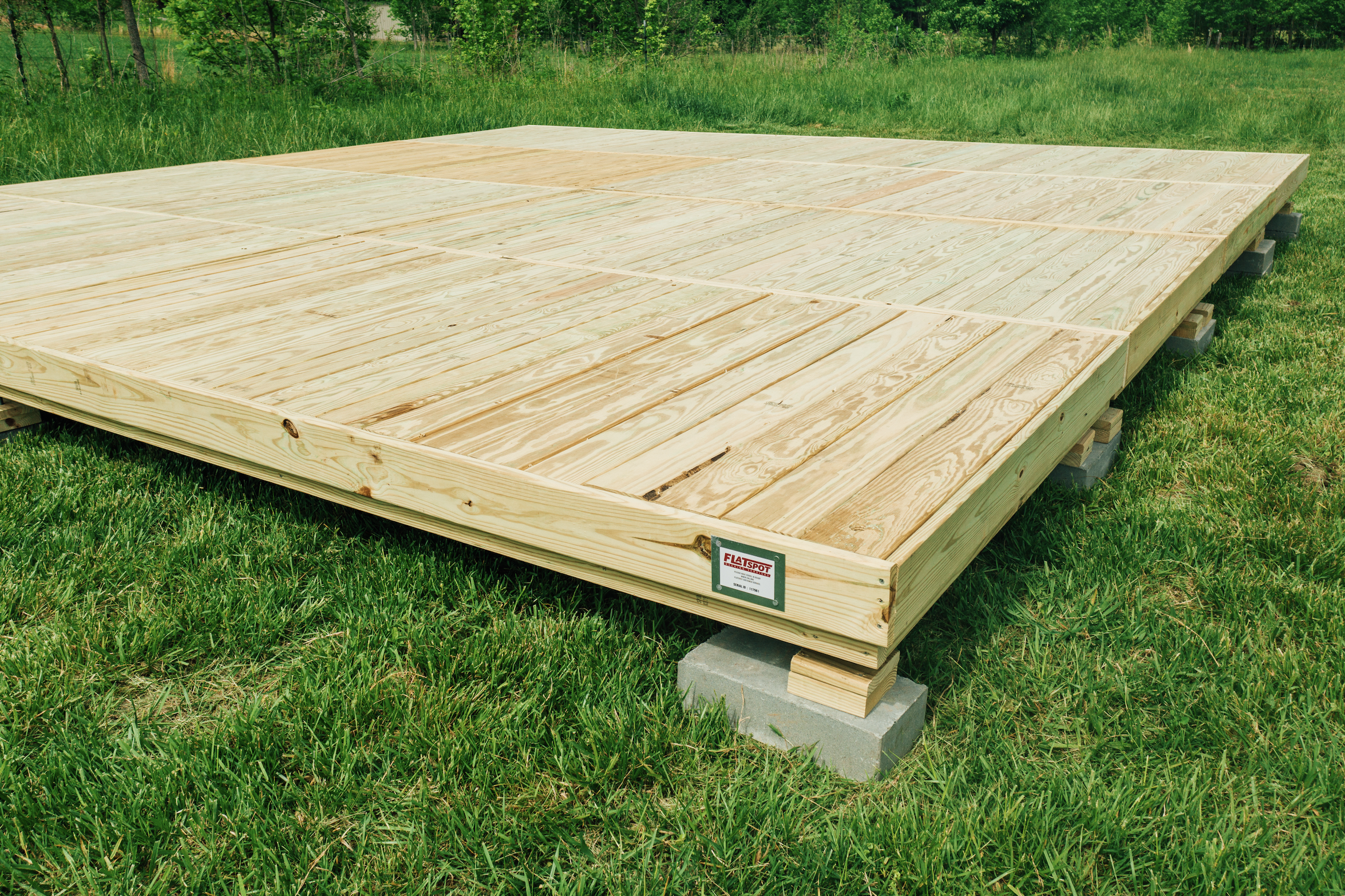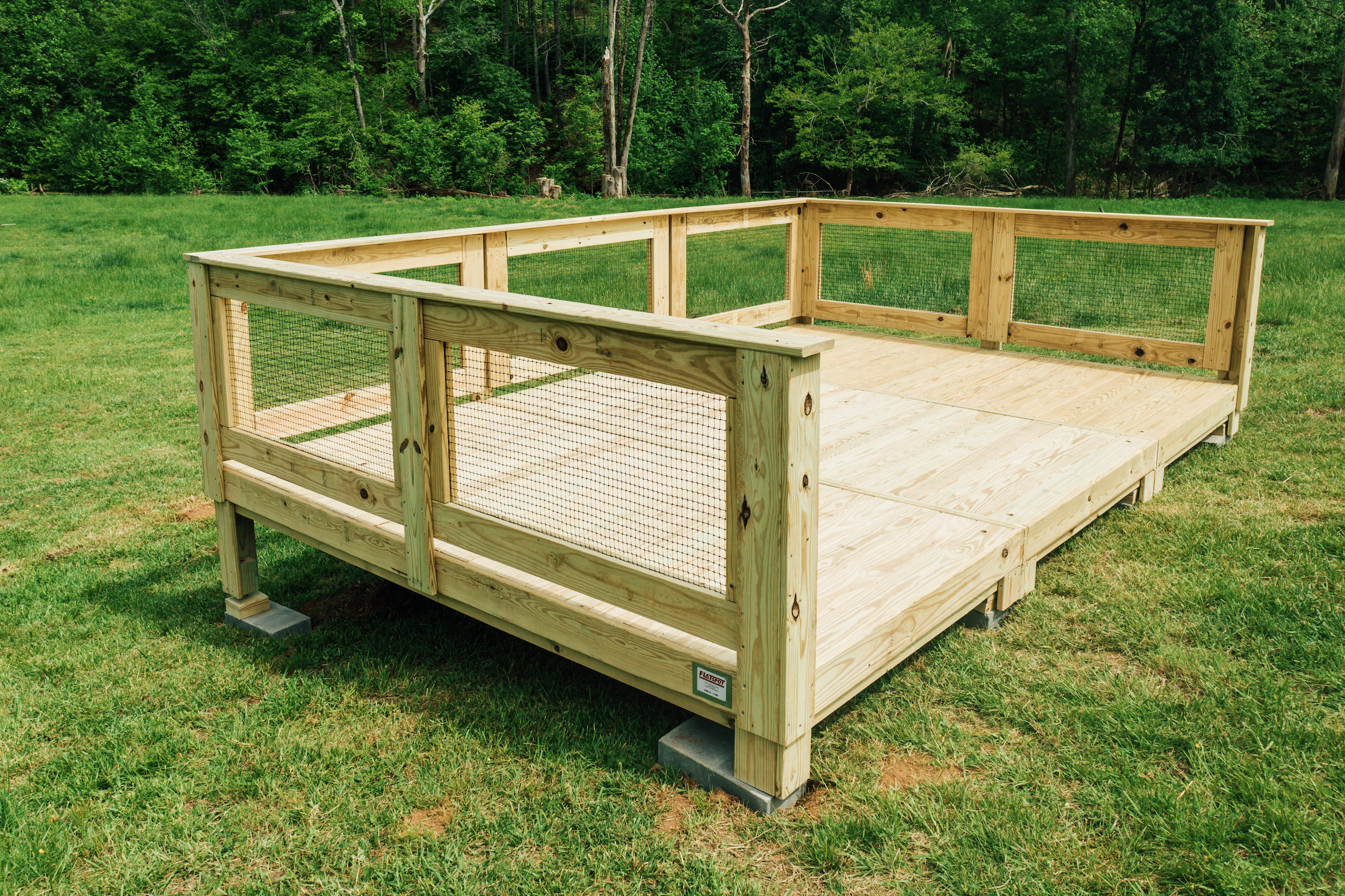Why Decking Material Matters
Finding the Balance Between Nature, Durability, and Design
Guest Blog powered by Flatspot Decking Services
When building a glamping site, the deck beneath each tent, dome, or cabin is more than a platform, it’s the foundation of guest experience. It must feel solid underfoot, withstand the elements, and harmonize with its natural surroundings. The right decking material defines the comfort, aesthetics, and longevity of every structure, making it one of the most important design decisions in outdoor hospitality.
This article explores the four leading glamping decking materials: wood, composite, PVC, and concrete, through the lens of sustainability, performance, and guest satisfaction.
Wood Decking: Timeless, Renewable, and Naturally Beautiful
Wood has been the backbone of outdoor structures for centuries. Its warmth, texture, and timeless appearance make it the gold standard for eco-friendly glamping design. In environments that celebrate the outdoors, natural wood enhances authenticity and guest comfort.
Advantages of Wood Decking
Natural Integration: Wood harmonizes seamlessly with the landscape, reinforcing the nature-first experience glamping is known for.
Renewable Resource: Responsibly sourced wood is one of the most sustainable building materials available.
Repairable and Customizable: Individual boards can be refinished or replaced, extending the life of the deck.
Comfortable Surface: Wood remains cooler in the sun and warmer in cold conditions compared to PVC or concrete.
Disadvantages of Wood Decking
Requires periodic sealing or staining to protect against weathering.
Without treatment, it can warp, fade, or splinter over time.
Despite the maintenance demands, wood’s natural feel and renewable qualities continue to make it a favorite among glamping site designers seeking an authentic connection to nature.
Composite Decking: Modern Engineering Meets Natural Aesthetics
Composite decking combines wood fibers and recycled plastics to create durable boards that replicate the look of wood with less maintenance — a smart, sustainable alternative for modern glamping projects.
Advantages of Composite Decking
Low Maintenance: No staining, sealing, or sanding required.
Long-Term Durability: Resistant to fading, splintering, rot, and insects.
Sustainable Composition: Often made from recycled plastics and reclaimed wood fibers.
Design Flexibility: Available in a range of colors and grain textures to match various glamping aesthetics.
Disadvantages of Composite Decking
Can retain heat, particularly in darker tones.
Higher initial cost compared to standard lumber.
For glamping operators, the tradeoff pays off — the reduced maintenance and extended lifespan often offset the initial investment, making composite decking an increasingly popular option for eco-luxury outdoor stays.
PVC Decking: Lightweight but Synthetic
PVC (polyvinyl chloride) decking is made entirely from plastic. It performs well in wet or humid conditions but can feel overly synthetic for settings meant to immerse guests in nature.
Advantages of PVC Decking
Moisture Resistance: Completely waterproof and easy to clean.
No Warping or Splitting: Performs consistently across climate conditions.
Disadvantages of PVC Decking
Artificial Aesthetic: Can appear shiny and unnatural in organic settings.
Environmental Impact: Non-biodegradable and energy-intensive to produce.
Thermal Discomfort: Retains heat and may become slippery when wet.
PVC can be a solution for specific use cases, but in glamping, where design harmony and sustainability are key, it rarely delivers the tactile warmth or authenticity guests expect.
Concrete Decking: Strength at the Cost of Character
Concrete remains a popular material in urban development, but in glamping infrastructure, its rigidity and environmental footprint can outweigh its durability advantages.
Advantages of Concrete Decking
Exceptional Strength: Withstands heavy loads and extreme weather.
Longevity: Can last decades with minimal maintenance.
Disadvantages of Concrete Decking
Environmental Impact: Concrete production generates significant CO₂ emissions, making it one of the least sustainable materials available.
Industrial Appearance: Lacks the natural warmth and visual harmony essential to outdoor hospitality.
Inflexible Installation: Not suited for modular or mobile glamping applications.
Permanent Ground Disruption: Concrete decks often require excavation, grading, and poured foundations that permanently alter the landscape. This process destroys soil ecology, root systems, and natural drainage — damage that cannot easily be reversed.
Non-Reversible Impact on Natural Settings: Once concrete is poured, the land beneath it is effectively sealed off, preventing regrowth or restoration. In contrast, modular wood and composite decks typically rest on adjustable supports and often require no anchoring at all, allowing sites to preserve the terrain and be restored to their natural state with minimal effort.
While concrete excels in permanence, it’s rarely the right fit for sustainable, flexible glamping operations that value environmental balance and design adaptability.
The Bottom Line: Natural Connection with Engineered Strength
For glamping operators, the best decking material strikes a balance between sustainability, mobility, and guest experience. Wood and composite modular decks deliver on all three fronts: they’re visually inviting, environmentally responsible, and adaptable to a wide range of landscapes.
Concrete and PVC may serve certain functions, but they lack the warmth, flexibility, and eco-alignment that glamping demands. Wooden and composite modular systems, by contrast, create a stable, comfortable surface that connects seamlessly with the environment while offering the flexibility to install, remove, or reconfigure decks with minimal environmental disruption.
This adaptability is particularly valuable for glamping businesses on leased or seasonal land, or those operating in eco-sensitive zones. Modular systems enable operators to expand or relocate their accommodations as demand shifts, reducing waste and preserving the natural terrain.
From a sustainability perspective, these materials also resonate with the values of today’s travelers. Guests are increasingly drawn to destinations that integrate sustainability into every design choice. Responsibly sourced wood offers a renewable, carbon-storing solution, while composites made from recycled materials reduce plastic waste and extend product life cycles.
Ultimately, wood and composite modular decking systems reflect the future of outdoor hospitality: low-impact luxury that balances beauty, performance, and environmental responsibility. They embody what glamping stands for — comfort without compromise, design rooted in nature, and spaces that feel as sustainable as they are stunning.
This article is powered by Flatspot — innovators in modular decking systems designed for outdoor living, glamping, and experiential hospitality.





